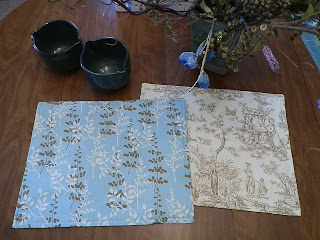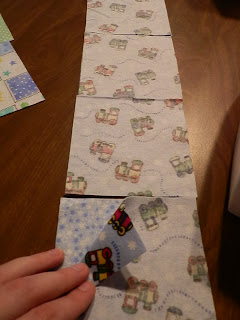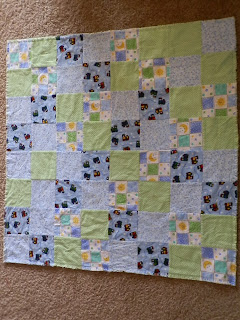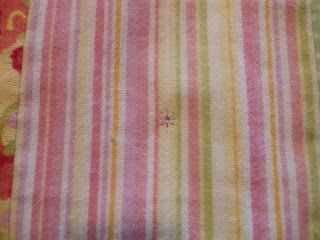Since our move I have been telling myself that I will not start a new project (or even buy material for a new one) until I finish my sewing to-do list. This is really difficult, especially since I just got a dress form from Tim for my birthday and I want to start doing some simple pattern design.
Notwithstanding, I have been making progress. Since we spent about a month in a hotel (waiting for our house to come available) I had a good amount of time to get some projects done. My first project was a tunic: Butterick 5450. I'm not much of a tunic person, but I thought that this would be cute. I do like how it turned out, and the pattern was fairly simple to follow. I recently started using tracing paper for my darts, and this makes the darts so much easier!
My other recent (completed) project was a pair of pants. I used Simplicity 2860 - Average. I have never tried pants before, so this was quite a learning experience. I had to figure out whether I was slim, average, or curvy.
To do this, one must measure the front crotch, then the back crotch. Then, based on the chart of measurements given, one can supposedly determine whether one is slim, average, or curvy. Well, my front measurement was slim and my back measurement was curvy. I decided that I must be average, since my measurements didn't match up with the chart.
After determining my shape, I should have gone on to determine my size. I assumed that since I am a size 12 for dresses, skirts, and blouses, that I am also a size 12 for pants. BIG MISTAKE!!! If I had simply taken the time to measure myself... well, let's just say that I could have saved myself some grief.
Thankfully, I had enough seam allowance to let the pants out about two inches. So they just barely fit me now. But they do look nice. I was going to wear them with my new tunic, but my husband doesn't think that they match. (I trust his judgement, so I will find some other pants to wear with it - maybe jeans?).
 |
| Before |
My most recent project is a slipcover for a seat. This involved:
1. Tracing the cushions onto the fabric (which I laid out on the floor).
2. Joining the front piece of fabric to the back piece of fabric with a bias strip (this made it easier to follow the curve of the cushion).
3. I left openings to slip the cushions out and added ties (this cushion apparently attaches to a swivel chair).
It was pretty simple. So now maybe I am ready to do a couch slipcover...
 |
| After |
 Here is a tutorial for making a toddler dress out of a t-shirt. I copied a dress that I already had in 4T, and I used a size L women's long sleeve t-shirt. The best part about this dress is that you don't have to do any hemming if you line up the neckline, sleeve hem, and skirt hem with the corresponding parts of the shirt!
Here is a tutorial for making a toddler dress out of a t-shirt. I copied a dress that I already had in 4T, and I used a size L women's long sleeve t-shirt. The best part about this dress is that you don't have to do any hemming if you line up the neckline, sleeve hem, and skirt hem with the corresponding parts of the shirt! 

















































